In the realm of workplace productivity, the pursuit of deep work is often portrayed as a sacred quest, with advice echoing through business articles, YouTube videos, and LinkedIn guru posts. But what about shallow work?
Many say, “Outsource or eliminate shallow work as much as possible.” However, that’s not to say shallow work isn’t important and should be overlooked. Personally, I’ve discovered tranquility in handling these smaller tasks that contribute to my overall productivity. How about you?
In the hustle of today’s fast-paced world, understanding deep work and shallow work is crucial. This article explores the distinctions, offering insights and tips for navigating both.
Boost your team’s efficiency with Hubstaff's productivity tools
Remote Work’s Impact on Deep Work
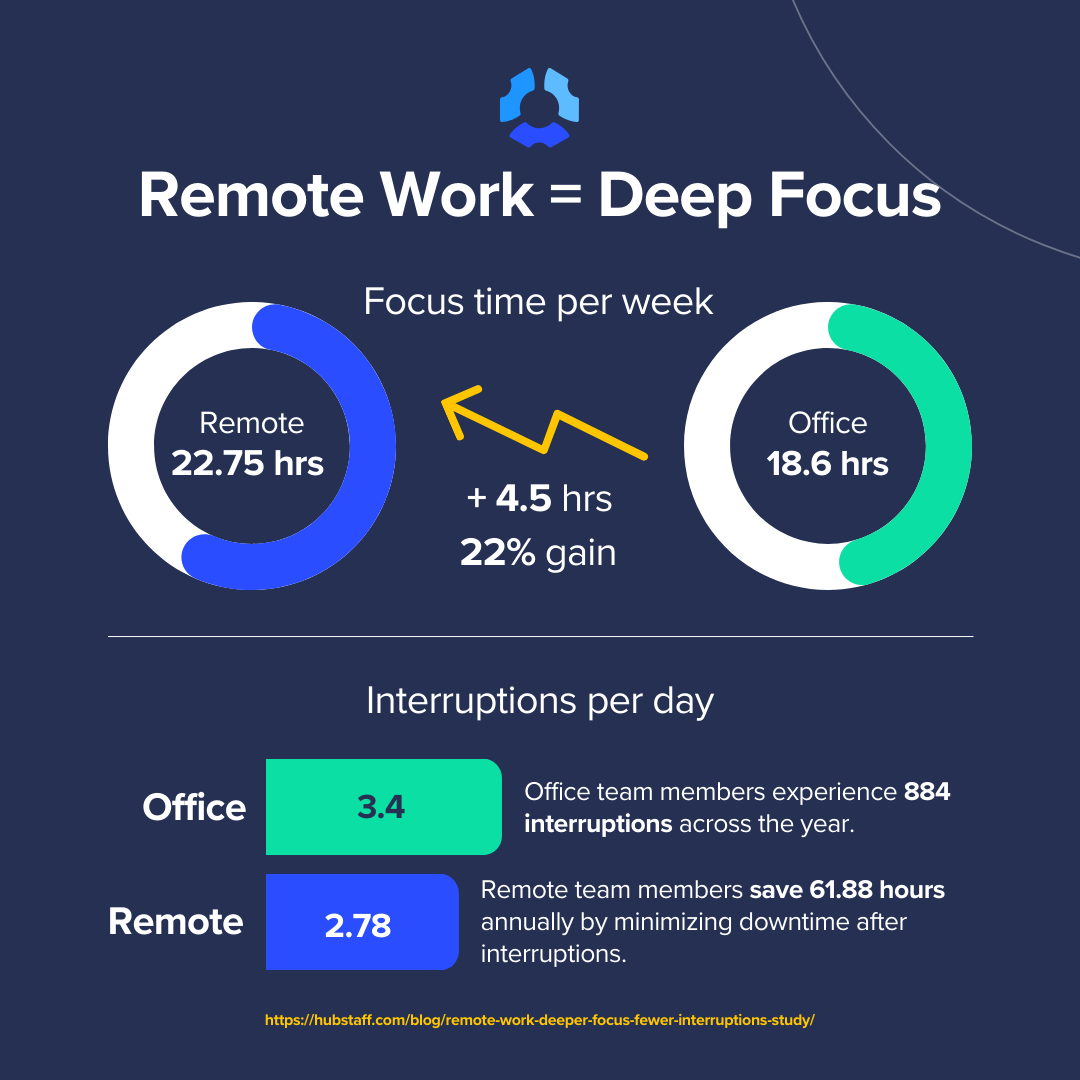
A recent Hubstaff study revealed the profound impact of remote work on the dynamics of deep work and interruptions. Let’s dig into the data.
Deeper Focus
Hubstaff’s data-driven analysis delves into the work habits and daily activities of remote teams, uncovering a significant advantage in focused work.
On average, remote team members dedicate 22.75 hours per week to focused tasks, a substantial 22% increase compared to their in-office counterparts. This shift challenges traditional perceptions, positioning remote work as a valuable ally for roles requiring deep work, including programming, writing, and project management.
Fewer Interruptions

One of the study’s noteworthy findings is the remarkable reduction in interruptions within remote settings, countering stereotypes of remote employees constantly working in a distracted world. Remote workers experience 18% fewer interruptions during focused work than their in-office peers.
Implications for Deep and Shallow Work Dynamics
Hubstaff’s research carries significant implications for the traditional dichotomy between deep and shallow work.
While the emphasis on outsourcing or eliminating admin tasks for deep work remains valid, the study suggests that remote work, by its nature, facilitates an environment where deep work can thrive. The reduced interruptions further emphasize the potential of remote work to foster distraction-free concentration.
Practical Insight: Elevate Focus and Deep Work Through Remote Work
In adapting to changing work landscapes, rethink your setup. Hubstaff’s study suggests remote work isn’t just a response; it’s a tool to unlock deep work, elevate productivity, and enhance job satisfaction. Welcome the shift to remote work for a positive change in how you can concentrate and get work done without interruptions.
Navigating Shallow Work
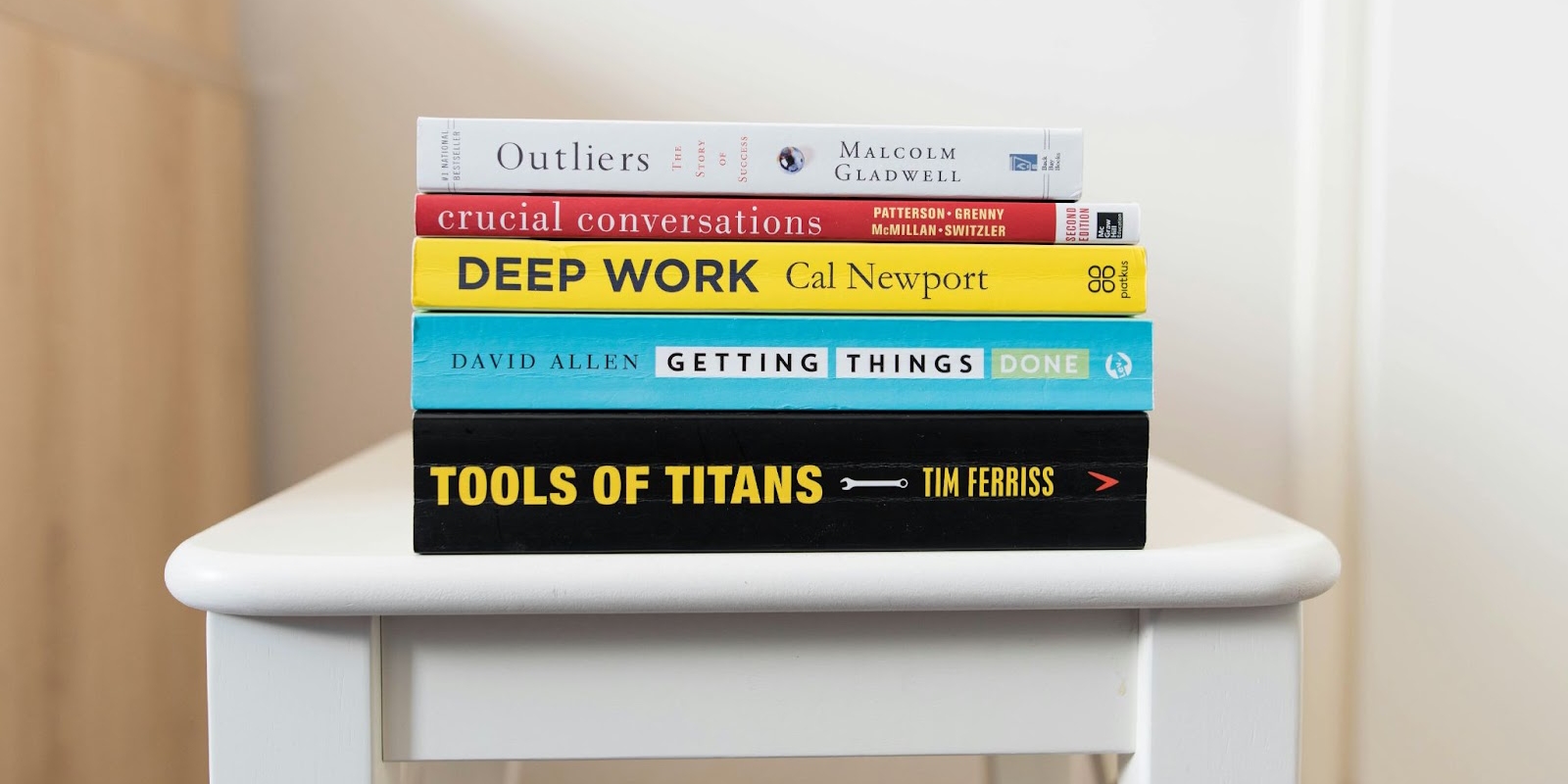
Shallow work, a term championed by productivity expert Cal Newport, encapsulates the routine and logistical tasks that, while necessary, lack the depth of cognitive engagement associated with deep work.
In contrast to deep work’s focus on maximum cognitive function, shallow tasks involve activities easily replicated, often done while distracted, and typically generating less substantial value.
Characteristics of Shallow Work
- Logistical and administrative: Shallow tasks are the day-to-day logistical duties crucial for operational flow but may not significantly contribute to your goals.
- Easily replicable: These tasks follow established patterns and are repetitive, making them easily replicable without demanding extensive creative input.
- Low cognitive demand: Shallow work requires lower cognitive engagement compared to deep work activities that demand critical and deep thinking and intense concentration.
Examples of Shallow Work
- Email and communication: Routine email responses and communication through platforms like Slack or Teams don’t require deep concentration.
- Data entry: Repetitive tasks such as inputting data into spreadsheets or databases exemplify classic shallow work activities.
- Pulling reports: Compiling and extracting routine reports, while necessary, is considered shallow work due to its procedural and repetitive nature.
- Checking social media: Managing and updating social media accounts, responding to comments, and routine social media tasks fall under shallow work.
- Meeting to meet: Participating in meetings without clear agendas or significant outcomes can contribute to the undertow of shallow work.
While these tasks play a role in overall goals, the challenge lies in you and your team spending a significant portion of your days immersed in shallow work.
Constantly navigating routine tasks, attending meetings, and grappling with changing priorities often leave little time for the deep, focused work needed to achieve your goals and objectives.
Cal Newport suggests the importance of minimizing the impact of shallow work, allowing professionals to allocate more dedicated time to higher cognitively demanding task efforts and contributing more meaningfully to their objectives.
The Impact of Shallow Work on Productivity

As the Hubstaff research highlighted, shallow tasks significantly affect overall productivity and work quality. The study reveals that shallow work, encompassing routine and easily replicable tasks, poses a notable challenge to professionals.
Here’s how shallow tasks influence productivity and work quality:
- Interrupted focus: Shallow work often leads to frequent interruptions, especially in traditional office settings. According to Hubstaff’s findings, in-office staff face an average of 3.40 interruptions per day during focused work, hindering the ability to maintain deep concentration.
- Recovery time and error rates: Research from the University of California at Irvine says it takes an average of 23 minutes for individuals to regain focus after an interruption. This recovery time, coupled with the frequent interruptions in shallow work, contributes to heightened stress and increased error rates in tasks, ultimately affecting the quality of work.
- Cost of interruptions: Cross-referencing the research from the University of California at Irvine with Hubstaff’s interruption data, the average office worker loses 6.52 hours per week — nearly a full day’s work. This lost time, coupled with potential errors induced by interruptions, directly impacts overall productivity and work quality.
Deep Work vs. Shallow Work
Deep work and shallow work represent two contrasting approaches to work, each with its characteristics and implications. Let’s compare these concepts and discuss the importance of balancing both in the workplace.
Deep Work Sessions
Deep work refers to activities that require intense focus. Examples include writing, coding, computer science, and designing.
Characteristics
- Complex and creative in nature.
- Requires uninterrupted periods of deep concentration.
- Results in high-quality work produced in a shorter time.
Importance
- Enhances productivity and efficiency.
- Develops skills, pushes boundaries, and fosters innovation.
- Improves problem-solving and critical thinking.
Shallow Work Sessions
Shallow work involves routine, less challenging tasks that can be easily accomplished without deep concentration. Examples include answering emails, attending meetings, and administrative tasks.
Characteristics
- Less demanding and often repetitive.
- It can be completed without deep cognitive effort.
- Necessary for daily operations and communication.
Importance
- Maintains organization and task completion.
- Supports relationships with colleagues and clients.
- Provides a sense of accomplishment and prevents burnout.
Balancing Deep Work and Shallow Work
- Find a balance: If you prioritize deep work too much, this can lead to employee burnout. On the other hand, excessive shallow work can result in reduced productivity. A healthy balance between the two ensures a productive and steady workflow.
- Schedule effectively: Allocate specific hours for both deep work and shallow work. Use a time tracking app like Hubstaff to create and adhere to schedules.
- Take breaks: Schedule frequent breaks to prevent burnout. Taking breaks enhances cognitive function and problem-solving abilities.
- Prioritize the right tasks: Identify and focus on tasks that require the most attention. Use a time management matrix to determine the best approach for your to-dos.
Importance of Balancing Deep Work and Shallow Work
- Prevents burnout: Balancing deep and shallow work ensures a healthy mix of challenging and less demanding tasks, preventing mental exhaustion.
- Maximizes productivity: Leveraging both types of work helps you make the most of work time and achieve better efficiency.
- Maintains innovation: Deep work fosters creativity and innovation, while shallow work ensures routine tasks are not neglected.
Strategies to Minimize Shallow Tasks
Reducing shallow work requires time management, task prioritization, and software tools. Here are some techniques you can use to help minimize shallow tasks.
Organize your tasks
To maximize productivity, strategically categorize tasks into deep work or shallow work. Consider factors like difficulty, how many hours they may take, and cognitive demand.
Evaluate if tasks tolerate distractions or require you to maintain focus. Establish explicit deadlines for each task to enhance time management while prioritizing activities based on their urgency and importance.
This framework helps you allocate your energy efficiently, fostering heightened productivity and successful task completion. Organize your tasks to:
- Cultivate a disciplined work routine
- Balance demanding, focused efforts and more routine, less mentally taxing tasks
- Achieve improved work performance and satisfaction
Schedule Focus Time and Deep Work
Plan focus time and deep work sessions during peak productivity hours to ensure maximum output. Set a limit of approximately 4-5 hours for deep work each day to prevent burnout.
This approach allows you to stay focused without compromising your mental well-being. By aligning tasks with your most productive hours and implementing structured time limits, you can sustain consistent productivity levels and avoid exhaustion, fostering a more sustainable and balanced work routine.
Time Blocking
Implement time blocking to schedule dedicated hours for deep work tasks, ensuring a structured and focused approach.
To safeguard concentration, limit your deep work tasks per day. Leverage automation tools like Hubstaff to seamlessly synchronize tasks with your calendar, streamlining the scheduling process.
Time blocking and automation enhance efficiency, allowing for concentrated work and a more organized and productive workflow.
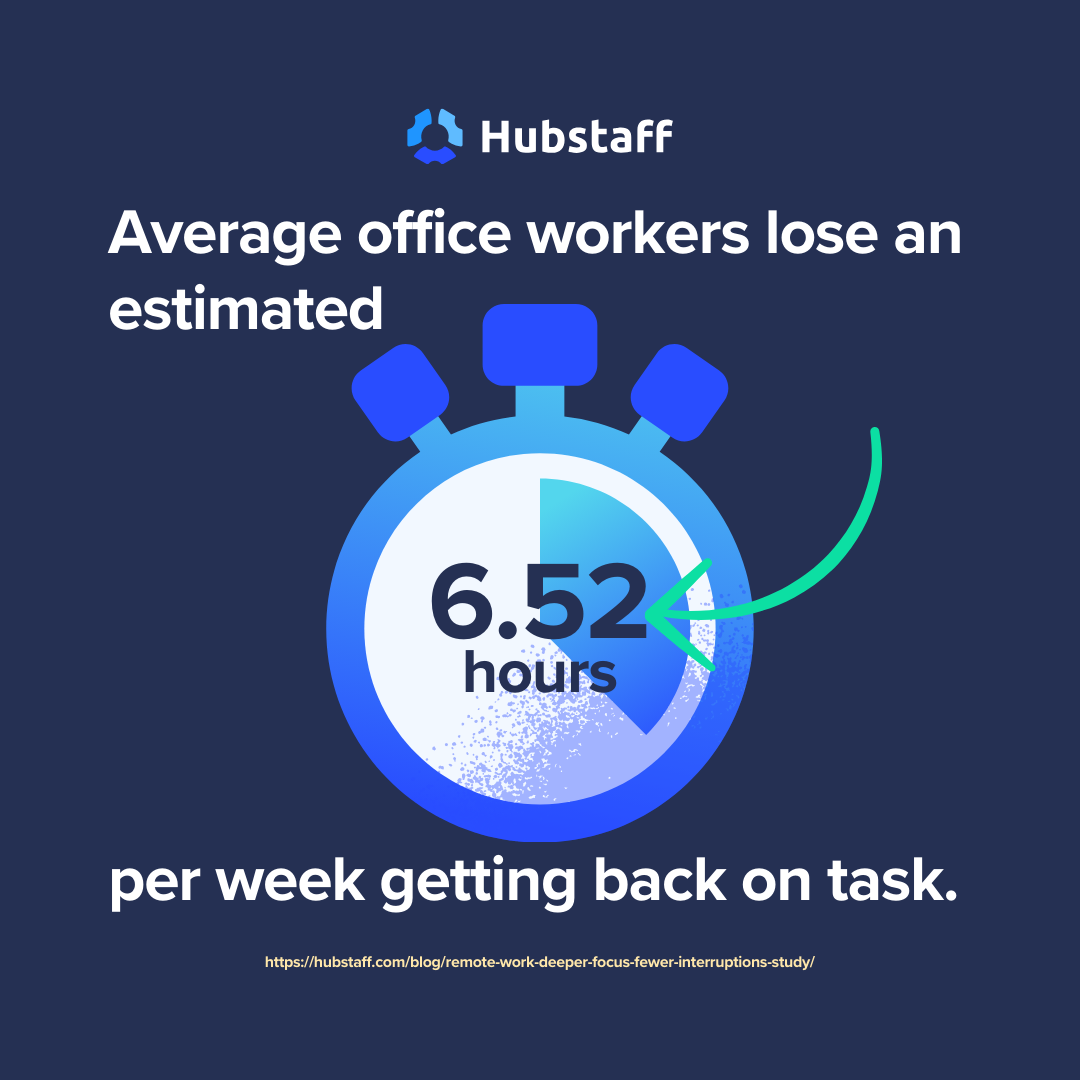
Block Distractions
Enhance focus during deep work by activating “Do Not Disturb” on devices and using self-discipline to avoid accessing your social media apps. Sync your Slack status with your calendar to notify colleagues of your dedicated focus time.
These strategies allow you to work deeply and promote a conducive environment for increased task efficiency.
Optimize Meetings
Optimize time spent in meetings by analyzing and prioritizing productive ones. When establishing clear meeting guidelines, include a defined agenda, objective, and attendee limit. This helps you avoid unnecessary wasted time.
Protect deep work time by instituting a no-meeting day, allowing for focused, uninterrupted work sessions. These actions streamline meetings, prioritize productivity, and create a structured balance between collaborative engagements and individual deep work, ultimately fostering a more effective and balanced work routine.
Integrate Tools
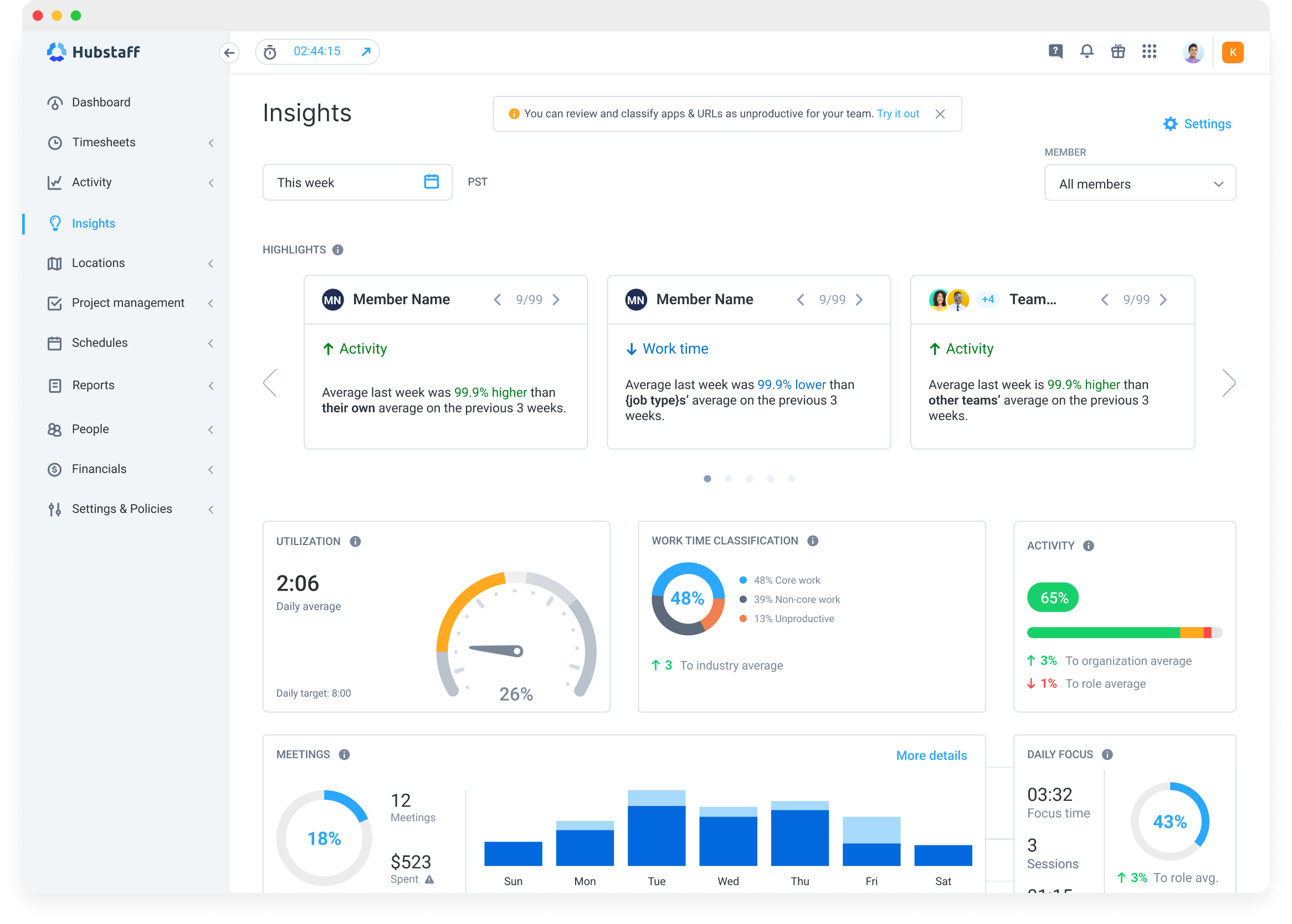
Hubstaff’s time tracking app gives you insights into project and task durations. It lets you differentiate deep work from shallow work using tags and project categories within time tracking and task management apps.
Need more in-depth performance metrics? Hubstaff’s Insights add-on helps you identify your most productive times and view productivity trends to take advantage of these high-energy hours.
AI tools like Reclaim.ai also help with task scheduling, helping foster a coordinated approach to any type of work.
Deep Work Practices
Here are a couple of additional deep work practices that you can seamlessly incorporate into your daily routine.
Take Breaks After Deep Work
- Prioritize mental breaks after intense deep work sessions.
- Engage in activities that rejuvenate your mind, such as walking, stretching, or meditating.
- Avoid diving into shallow work during breaks to allow for true mental relaxation.
Set and Track Deep Work Goals
- Regularly set deep work goals and constantly evaluate your progress over time.
- Track metrics like time spent in deep work, completion of deep work tasks, and productivity levels.
- Adjust goals and priorities based on weekly analyses.
The Balancing Act: Mastering Deep Work and Shallow Work for Peak Productivity
While shallow work generally isn’t as impactful as deep work, it’s by no means unimportant. Aside from being necessary in day-to-day operations, this type of work is also vital to productivity.
A balance between deep and shallow work is necessary — you can’t be productive doing only one or the other. For best results, leverage the remote work advantages of fewer interruptions and more opportunities for focused work.
How do you handle shallow work? We want to hear about your experiences and strategies for managing low-value tasks. Share them in the comments below.
Most popular
The Fundamentals of Employee Goal Setting
Employee goal setting is crucial for reaching broader business goals, but a lot of us struggle to know where to start. American...
Data-Driven Productivity with Hubstaff Insights: Webinar Recap
In our recent webinar, the product team provided a deep overview of the Hubstaff Insights add-on, a powerful productivity measurem...
The Critical Role of Employee Monitoring and Workplace Security
Why do we need employee monitoring and workplace security? Companies had to adapt fast when the world shifted to remote work...
15 Ways to Use AI in the Workforce
Whether through AI-powered project management, strategic planning, or simply automating simple admin work, we’ve seen a dramatic...
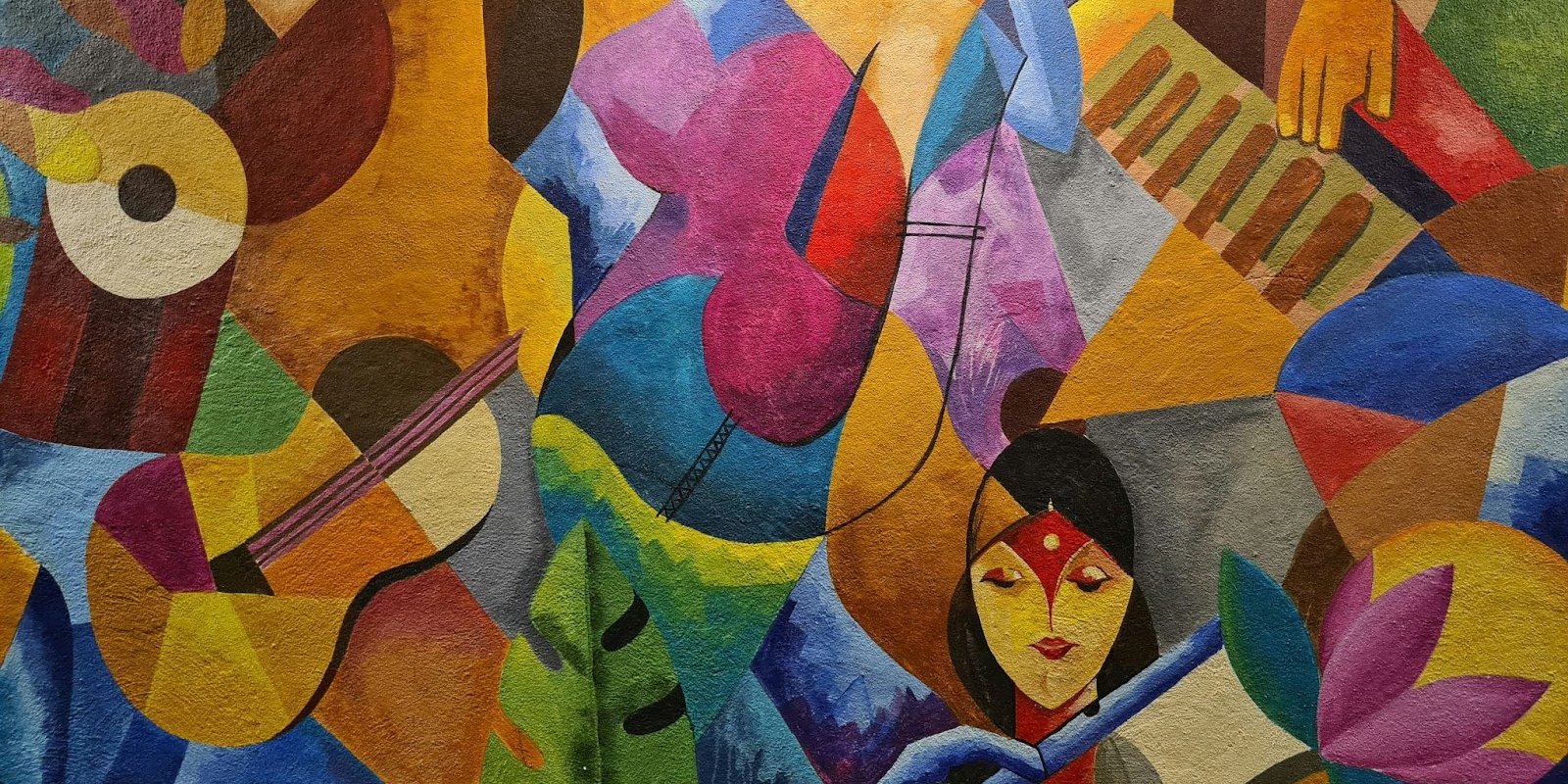



![How to Use Time Blocking to Make 2024 Your Most Productive Year Ever [Free Template]](https://hubstaff.com/blog/wp-content/uploads/2018/12/time-blocking@2x-780x390.png)
